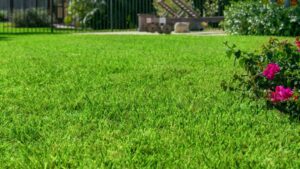Granite flooring and tile flooring both have their advantages and disadvantages, and the best choice for your home will depend on several factors, including your personal preferences, budget, and lifestyle. Here are some factors to consider when deciding between granite flooring and tile flooring:
Durability and Appearance:
Granite flooring is a highly durable and long-lasting flooring option that can withstand heavy foot traffic, impacts, and scratches. Tile flooring, on the other hand, is also durable but may be more prone to cracking or chipping if it is not installed properly or if heavy objects are dropped on it. Granite flooring has a unique and natural appearance that can add a luxurious and sophisticated look to a home. Tile flooring comes in a variety of colors, patterns, and styles, and can be customized to fit your design preferences.
Maintenance and Cost:
Both granite and tile flooring requires regular cleaning and maintenance to keep them looking their best. Granite flooring may need to be resealed periodically to protect it from staining, while tile flooring may require occasional grout cleaning or replacement. Granite flooring is generally more expensive than tile flooring, both in terms of materials and installation costs.
What material is required for granite flooring?
The material required for granite flooring includes the following:
Granite tiles or slabs: Granite is a natural stone that is available in various colors and patterns. It is typically sold in tile or slab form, with tiles being smaller and easier to handle, while slabs are larger and often used for larger areas or as a countertop material.
Subfloor: The subfloor is the structural floor that supports the granite tiles or slabs. It is typically made of concrete or plywood and must be level and free from any debris before the installation of the granite.
Thin-set mortar: Thin-set mortar is a cement-based adhesive that is used to bond the granite tiles or slabs to the subfloor. It comes in a powdered form and is mixed with water to create a paste that is then applied to the subfloor using a notched trowel.
Grout: Grout is a cement-based material that is used to fill the gaps between granite tiles or slabs. It comes in a variety of colors and is applied after the thin-set mortar has cured.
Sealant: Sealant is a protective coating that is applied to the surface of the granite to prevent staining or damage from moisture. It is typically applied after the grout has cured and must be reapplied periodically to maintain its effectiveness.
How long will granite flooring last?
Granite flooring is a highly durable and long-lasting flooring option that can last for decades or even centuries with proper care and maintenance. The lifespan of granite flooring will depend on several factors, including the quality of the stone, the conditions in which it is installed, and the level of foot traffic it experiences.
To ensure the longevity of your granite flooring, it is important to have it installed by a professional with experience working with natural stone. Proper sealing and regular cleaning and maintenance can also help to extend the life of your granite flooring. Additionally, it is important to avoid exposing your granite flooring to harsh chemicals, excessive moisture, or extreme temperatures, as these can cause damage or wear over time.




